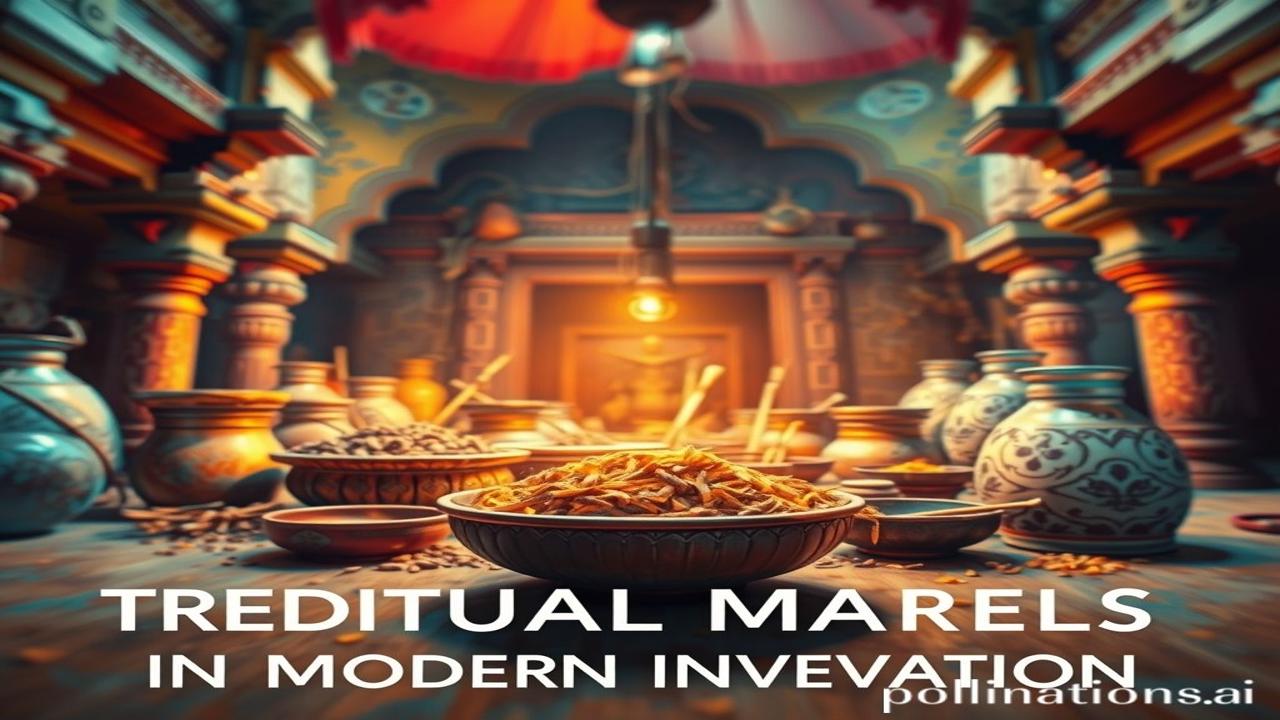Kabhi Socha Hai, Mitti Se Bana Mahal Aaj Bhi Aasmaan Chhu Raha Hai?
Waqt ki dhool mein dabi, ek aisi kahani hai jo pathar, lakdi aur mitti se shuru hui. Imagine karo, ek aisa daur jab technology sirf hunar tha, aur resources sirf prakriti. Hamare purvajo ne inhi se woh sab kuch bana diya jo aaj bhi humein hairan karta hai. Aaj hum baat karenge un traditional materials ki jo modern innovation ki neev bane. Think about it, without those ancient techniques, where would we be today?
इतिहसिक पृष्ठभूमि: Traditional Materials – Bharat Ki Jaan
India, ek aisa desh jahan har pathar ek kahani kehta hai, har ped ek dastan sunata hai. Hazaaron saalon se, Bharat ne apne aaspas ki prakriti se jud kar hi apni shakti banai hai. Traditional materials, jaise ki lakdi, mitti, pathar, baans, aur cotton, sirf resources nahi the, woh hamare jeevan ka hissa the.
- Mitti (Earth): Indus Valley Civilization (3300-1700 BCE) mein mitti ke bartan, ghar aur ईंट (bricks) ka istemal hota tha. Think about Mohenjo-daro and Harappa – pure cities built with mud bricks! Yeh mitti sirf ek material nahi thi, yeh jeevan ka प्रतीक (symbol) thi.
- Lakdi (Wood): Shuru se hi, lakdi hamare ghar, रथ (chariots), aur naukaien (boats) banane ke kaam aayi. The intricate carvings on temples like Khajuraho and Konark showcase the mastery of wood carving. Lakdi ne hamari sanskriti ko आकार (shape) diya.
- Pathar (Stone): Mughal architecture, South Indian temples, aur ancient stupas – sabhi pathar ki shakti ki misaal hain. Taj Mahal ki safedi ho ya Hampi ke mandiron ka robustness, pathar hamari dharti ka ek important part hai.
- Baans (Bamboo): Bamboo ek aisi material hai jo ghar banane se lekar hathiyar banane tak kaam aati hai. Northeast India mein bamboo ka istemal itna vyapak hai ki yeh logon ke jeevan ka ek अभिन्न अंग (integral part) ban chuka hai.
- Cotton (Kapda): India duniya ka sabse bada cotton utpadak tha. Fine muslin se lekar khadi tak, cotton ne humein odhne-bichhone aur apne aap ko dhakne mein madad ki. Mahatma Gandhi ne khadi ko Swaraj ka प्रतीक (symbol) banaya, aur yeh aaj bhi hamari pehchan hai.
ज़मीनी सच – लोग और जीवन: Jab Hunar Ne Kalpana Ko Mila Diya
Imagine karo, ek shilpkar, apne haathon se mitti ko आकार (shape) de raha hai. Uske chehre par dhool lagi hai, lekin uski aankhon mein ek sapna hai. Woh ek diya bana raha hai, jo Diwali ki raat ghar ko roshan karega.
“Ma Rukmini ne aaj naye kapde pehne, kyunki mandir mein utsav tha…” These were not just clothes; they were woven with stories, traditions, and love.
Ek raaja apne shilpakaron ko aadesh deta hai, “Ek aisa mahal banao jo waqt ko bhi jhuka de.” Un shilpakaron ne patthar ko tarasha, aur ek aisi imarat banai jo aaj bhi humein hairan karti hai. Their tools were simple, but their imagination was limitless.
Farmers used bamboo to build their homes, artisans crafted intricate designs on wood, and weavers spun magic with cotton. Har ek ka hunar, har ek ki mehnat, Bharat ki neev bana.
धरोहर और पहचान: Traditional Materials in Modern India
Aaj bhi, traditional materials hamare jeevan ka hissa hain. Khadi ke kapde fashion mein hai, bamboo furniture trendy hai, aur mitti ke bartan logon ko pasand aa rahe hain.
- Architecture: Architects are now using sustainable materials like bamboo and rammed earth to create eco-friendly buildings. These materials not only reduce the carbon footprint but also connect us to our roots.
- Art: Artists are reviving traditional techniques like Madhubani painting and Warli art, using natural pigments and materials. This not only preserves our cultural heritage but also provides livelihood to rural communities.
- Festivals: Diwali mein mitti ke diye, Holi mein rangon ka istemal, aur Ganesh Chaturthi mein mitti ki murti – yeh sabhi traditional materials hamare tyoharon ko aur bhi विशेष (special) banate hain.
Yeh traditional materials sirf resources nahi hain, yeh hamari Bharatiyata ka hissa hain. They connect us to our past and inspire us to create a better future.
मजेदार तथ्य या भ्रम-भंजक: Did You Know?
Log samajhte hain ki Taj Mahal sirf pyaar ki nishaani hai, lekin asli sach yeh hai ki iski architecture mein Bharat, Persia, aur Central Asia ki kala ka sangam hai. It is a testament to the power of collaboration and innovation.
दृश्य और भावनाएं: Imagine the Scents and Sounds
Imagine the smell of freshly turned earth after the first monsoon rains. The earthy aroma mingled with the sweet fragrance of jasmine flowers used in pooja. The rhythmic clinking of the potter’s wheel, the steady tap-tap of the weaver’s loom, and the melodious chants from the nearby temple – these sounds were the soundtrack of daily life. The cool, smooth texture of river-worn stones, the rough feel of handspun cotton, the warm glow of a clay lamp – these sensations were deeply ingrained in our senses.
अंतिम विचार या उद्धरण: A Timeless Connection
“Vasudhaiva Kutumbakam” – The world is one family. Our traditional materials teach us to live in harmony with nature and each other. Let us embrace our past and build a future where tradition and innovation go hand in hand.
“Sanskriti ki जड़े मजबूत, to vikas ki डाली फलदार।” (If the roots of culture are strong, the branches of development will be fruitful.)
